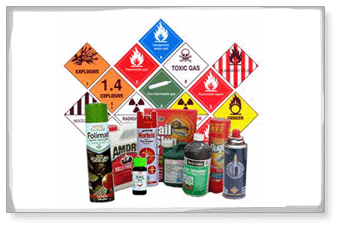Hazardous Materials are substances that may be corrosive, flammable, explosive, spontaneously combustible, toxic, oxidising, radioactive, biological, water reactive or gases under pressure or liquefied.
Fuels such as petrol and LPG provide by far the largest volume of dangerous goods, and many industries and even homes may contain these and other types of dangerous goods. The law provides for exterior signs to be shown warning of significant amounts of dangerous goods on a site. These may take the form of the word HAZCHEM, or might display dangerous goods diamond symbols. The manifest box is another sure sign that dangerous goods are present.

What are Hazardous Substances?
Hazardous substances are substances with the potential to harm health. They can be gases, liquids or solids, and can be either pure substances or mixtures.Hazardous substances are classified according to their long term health effects, while dangerous goods are classified by their immediate physical and / or chemical effects
What are Hazardous Materials?
Hazardous materials are other materials that may have hazardous properties, and include dangerous goods, hazardous substances, scheduled poisons, hazardous wastes and environmental pollutants. NFA categorises all these materials together under the title "Hazardous Materials" or "HAZMATS".
Hazardous Materials Incident
A hazardous materials incident involves the actual or impending spillage or release of a hazardous material, in sufficient quantity to pose a danger to life, property or the environment. A hazardous materials incident may occur during manufacture, use, handling, transport or storage of hazardous materials.



 Join our Facebook page
Join our Facebook page